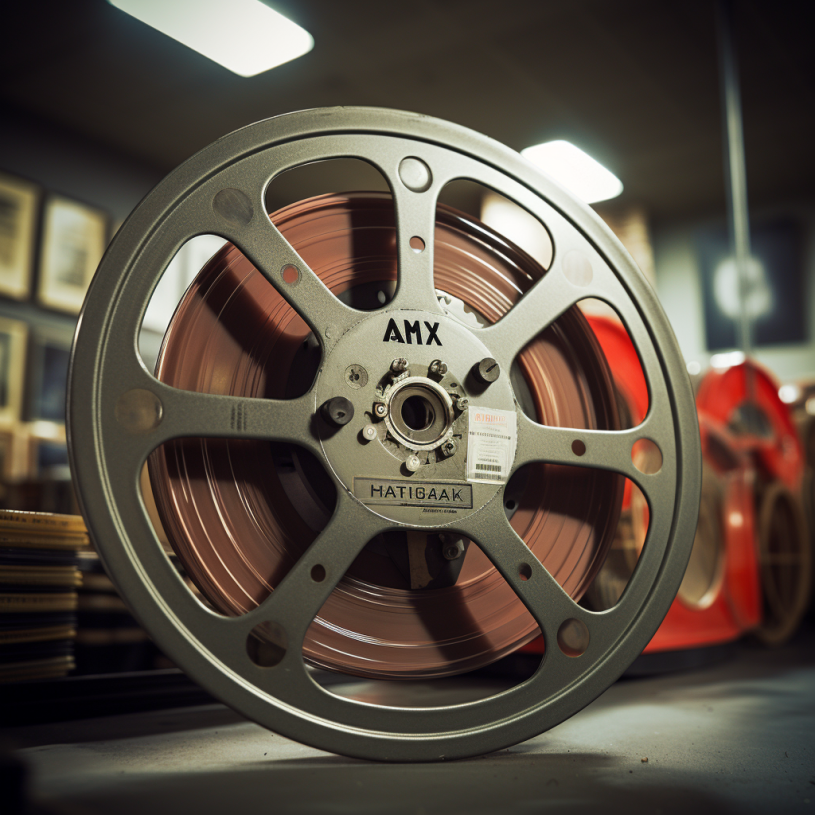The hype surrounding the “Oppenheimer” movie in IMAX is palpable and for good reason. This film, projected in the immersive IMAX format, promises to deliver a cinematic experience like no other. The larger-than-life screen, combined with the superior sound quality of IMAX, is expected to bring the story of J. Robert Oppenheimer, the “father of the atomic bomb,” to life in a way that’s both visually stunning and emotionally resonant.
The anticipation is further fueled by the fact that this is not just any movie, but one directed by Christopher Nolan, a filmmaker known for his meticulous attention to detail and his love for shooting on film, particularly IMAX. Nolan’s previous works have set a high bar for IMAX presentations, and expectations are sky-high for “Oppenheimer.” The hype is not just about the technology, but also about the potential for this film to be a landmark in cinematic storytelling, leveraging the power of IMAX to draw viewers into Oppenheimer’s world.
IMAX, a name synonymous with larger-than-life cinematic experiences, has been wowing audiences for decades. The journey of IMAX began with its iconic 70mm film projection, taking viewers on unforgettable visual adventures. However, with advancements in digital technology, the IMAX experience has transformed, offering new possibilities and challenges. In this blog post, we’ll explore the evolution of IMAX, comparing the pros and cons of both IMAX 70mm film and digital IMAX projection.

Comparison table highlighting some key differences between IMAX 70mm film and digital IMAX projection:
| Aspect | IMAX 70mm Film | Digital IMAX |
|---|---|---|
| Image Quality | Exceptional clarity | Crisp and detailed |
| Resolution | Extremely high (18K+) | High (4K or 2K) |
| Dynamic Range | Excellent contrast | Good contrast |
| Color Reproduction | Rich and vibrant | Vivid and accurate |
| Aspect Ratio | Varies (typically 1.43:1) | Standard widescreen (1.90:1 or 1.43:1) |
| Sound Quality | Immersive and powerful | Immersive and powerful |
| Film Projection | Projected from 70mm film | Projected from digital source |
| Image Consistency | Slightly prone to variations due to film quality and aging | Consistent across screenings |
| Maintenance | Film handling and upkeep required | Minimal maintenance required |
| Availability | Limited number of theaters | Widespread availability |
| Filmmaker Preference | Preferred by some directors for its unique aesthetic | Increasingly embraced due to advancements in digital technology |
| Cost | Higher production and distribution costs | Lower production and distribution costs |
It’s worth noting that the digital IMAX format has evolved over the years, and some newer digital IMAX installations have adopted advanced technologies like laser projection and higher resolutions. As a result, the specifications and capabilities of digital IMAX can vary to some extent depending on the specific theater and equipment being used.
IMAX 70mm film projection offers a unique and immersive experience due to the larger film format, while digital IMAX provides high-quality visuals and sound with more consistency and accessibility. Ultimately, the choice between the two formats depends on various factors such as the filmmaker’s preference, theater availability, and technological advancements.
Comparing IMAX 70mm Film vs Digital IMAX:
IMAX 70mm Film:
Pros:
- Exceptional Image Quality: IMAX 70mm film provides exceptional clarity, sharpness, and detail due to its large film format.
- Immersive Experience: The combination of the larger film format, high-resolution image, and powerful sound system creates a truly immersive cinematic experience.
- Unique Aesthetic: Some filmmakers and cinephiles appreciate the unique aesthetic qualities of film projection, including the grain structure and texture.
- Dynamic Range: IMAX 70mm film offers excellent contrast and dynamic range, resulting in deep blacks and vibrant colors.
- Filmmaker Preference: Certain directors choose to shoot or project their films in IMAX 70mm to achieve a specific visual impact or to create a more cinematic experience.
Cons:
- Limited Availability: IMAX 70mm film projection is available in a limited number of theaters due to the specialized equipment and film distribution requirements.
- Film Handling and Upkeep: Working with 70mm film requires careful handling, regular maintenance, and specialized projection equipment, which can be more labor-intensive and costly.
- Image Consistency: Film projection may be susceptible to variations in image quality due to film quality, aging, or the condition of the projection equipment.
- Higher Production Costs: Producing and distributing films in the IMAX 70mm format can be more expensive compared to digital formats.
Digital IMAX:
Pros:
- High-Quality Visuals: Digital IMAX offers crisp and detailed visuals with high resolutions, typically 4K or 2K, resulting in a visually stunning presentation.
- Consistent Image Quality: Digital projection ensures consistent image quality across screenings since it is not subject to variations in film quality or aging.
- Accessibility: Digital IMAX is more widely available, allowing a larger audience to experience the IMAX format.
- Lower Maintenance: Digital projection requires less maintenance compared to film, as there is no need for film handling, cleaning, or regular equipment calibration.
- Lower Production Costs: Producing and distributing films in digital formats generally incur lower costs compared to shooting and distributing on 70mm film.
Cons:
- Aesthetic Differences: Some cinephiles argue that the digital format lacks the unique aesthetic qualities and texture that can be achieved with IMAX 70mm film.
- Limited Resolution: Although digital IMAX offers high resolutions, it may not match the extreme resolution capabilities of IMAX 70mm film.
- Dynamic Range: While digital IMAX offers good contrast, it may not provide the same level of dynamic range and deep blacks as IMAX 70mm film.
- Filmmaker Preference: Despite advancements in digital technology, some filmmakers and purists still prefer the aesthetic and authenticity of shooting on film.
These pros and cons highlight the trade-offs between IMAX 70mm film and digital IMAX, and the choice between the two formats often depends on factors such as the filmmaker’s artistic vision, availability of equipment, theater infrastructure, and audience preferences.

Tabular Comparison: Pros and Cons of IMAX 70mm film and digital IMAX:
| Aspect | IMAX 70mm Film | Digital IMAX |
|---|---|---|
| Pros | Exceptional image quality | High-quality visuals |
| Immersive experience | Consistent image quality | |
| Unique aesthetic qualities | Accessibility to a larger audience | |
| Dynamic range and vibrant colors | Lower maintenance requirements | |
| Filmmaker preference for specific visuals | Lower production costs | |
| Cons | Limited availability | Lack of unique aesthetic texture |
| Film handling and upkeep | Limited resolution compared to IMAX 70mm film | |
| Image consistency variations | Lesser dynamic range compared to IMAX 70mm film | |
| Higher production costs | Filmmaker preference for film aesthetic |
It’s important to note that these pros and cons may vary depending on individual preferences, advancements in technology, and the specific implementation of IMAX in different theaters.
Conclusion:
In conclusion, the anticipation for the “Oppenheimer” movie in IMAX is a testament to the power of this format in enhancing cinematic storytelling. With the combination of Christopher Nolan’s directorial prowess and the immersive qualities of IMAX, whether in 70mm or Digital, audiences are eagerly awaiting a viewing experience that promises to be both visually spectacular and deeply engaging.

